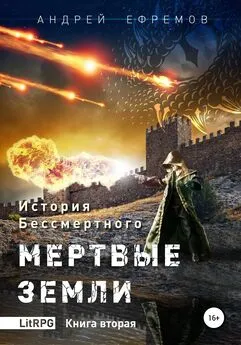Андрей Журавлёв - Сотворение Земли. Как живые организмы создали наш мир
- Название:Сотворение Земли. Как живые организмы создали наш мир
- Автор:
- Жанр:
- Издательство:Альпина нон-фикшн
- Год:2018
- Город:Москва
- ISBN:978-5-9614-5294-5
- Рейтинг:
- Избранное:Добавить в избранное
-
Отзывы:
-
Ваша оценка:
Андрей Журавлёв - Сотворение Земли. Как живые организмы создали наш мир краткое содержание
О том, как формировалась наша планета — такая, какой мы ее знаем, — книга Андрея Журавлева, палеонтолога, доктора биологических наук, профессора кафедры биологической эволюции биологического факультета МГУ.
Сотворение Земли. Как живые организмы создали наш мир - читать онлайн бесплатно ознакомительный отрывок
Интервал:
Закладка:
Donoghue P. C. J., Keating J. N. 2014. Early vertebrate evolution // Palaeontology, 57, 879–93.
Dornbos S. Q., Bottjer D. J., Chen J. 2005. Paleoecology of benthic metazoans in the Early Cambrian Maotianshan Shale biota and the Middle Cambrian Burgess Shale biota: evidence for the Cambrian substrate revolution // Palaeogeography, Palaeoclimatology, Palaeoecology, 220, 47–67.
Droser M. D., Finnegan S. 2003. The Ordovician Radiation: A follow-up to the Cambrian Explosion? // Integrative and Comparative Biology , 43, 178–84.
Duan Y. et al. 2014. Reproductive strategy of the bradoriid arthropod Kunmingella douvillei from the Lower Cambrian Chengjiang Lagerstätte, South China // Gondwana Research , 25, 983–90.
Dunne J. A., Williams R. J., Martinez N. D., Wood R. A., Erwin D. H. 2008. Compilation and network analyses of Cambrian food webs // PLoS Biology , 6 (4), e102. DOI: 10.1371/journal.pbio.0060102
Esteve J., Hughes N. C., Zamora S. 2011. Purujosa trilobite assemblage and the evolution of trilobite enrollment // Geology, 39, 575–8.
Gámez Vintaned J. A., Liñán E., Navarro D., Zhuravlev A. Yu. 2017. The oldest Cambrian skeletal fossils of Spain (Cadenas Ibéricas, Aragón) // Geological Magazine. DOI: 10.1017/S0016756817000358
Harper D. A. T., Zhan R., Jin J. 2015. The Great Ordovician Biodiversification Event: Reviewing two decades of research on diversity’s big bang illustrated by mainly brachiopod data // Palaeoworld. 24, 75–85.
Haug J. T., Waloszek D., Haug C., Maas A. 2010. High-level phylogenetic analysis developmental sequences: The Cambrian † Martinssonia elongata , † Musacaris gerdgeyeri gen. et sp. nov. and their position in early crustacean evolution // Arthropod Structure & Development , 39, 154–73.
Haug J. T., Waloszek D., Maas A., Liu Y., Haug C. 2012. Functional morphology, ontogeny and evolution of mantis shrimp-like predators in the Cambrian // Palaeontology , 55, 369–99.
Haug J. T., Caron J.-B., Haug C. 2013. Demecology in the Cambrian: synchronized molting in arthropods from the Burgess Shale // BMC Biology , 11, 64. DOI: 10.1186/1741-7007-11-64
Hints O. et al. 2010. Biodiversity patterns of Ordovician marine microphytoplankton from Baltica: Comparison with other fossil groups and sea-level changes // Palaeogeography, Palaeoclimatology, Palaeoecology, 294, 161–73.
Holland P. W. H. 2015. Did homeobox gene duplications contribute to the Cambrian explosion? // Zoological Letters , 1, 1. DOI: 10.1186/s40851-014-0004-x
Janvier P. 1996. Early Vertebrates. Oxford: Oxford Univ. Press, 393 p. ( Oxford Monographs on Geology and Geophysics , 33).
Klemetsen A. 2010. The charr problem revisited: exceptional phenotypic plasticity promotes ecological speciation in postglacial lakes // Freshwater Reviews , 3, 49–74.
Kowalewski M., Kelley P. H., eds. 2002. The Fossil Record of Predation // Paleontological Society Papers , 8, 1–398.
Kröger B., Vinther J., Fuchs D. 2011. Cephalopod origin and evolution: A congruent picture emerging from fossils, development and molecules // Bioessays , 33, 602–13.
Krumbein W. E., Paterson D. M., Stal L. J., eds. 1994. Biostabilization of Sediments. Oldenburg: Bibliotheks und Informationssystem der Carl von Ossietzky Universität, 526 p.
Lamsdell J. C., Hoşgör I., Selden P. A. 2013. A new Ordovician eurypterid (Arthropoda: Chelicerata) from southeastern Turkey: Evidence for a cryptic Ordovician record of Eurypterida // Gondwana Research , 23, 354–66.
Lee M. S. Y., Soubrier J., Edgecombe G. D. 2013. Rates of phenotypic and genomic evolution during the Cambrian Explosion // Current Biology , 23, 1889–95.
Lenton T. M. et al. 2014. Co-evolution of eukaryotes and ocean oxygenation in the Neoproterozoic era // Nature Geoscience , 7, 257–65.
Logan G. A. et al. 1995. Terminal Proterozoic reorganization of biogeochemical cycles // Nature , 376, 53–6.
Ma X., Edgecombe G. D., Hou X., Goral T., Strausfeld N. J. 2015. Preservational pathways of corresponding brains of a Cambrian euarthropod // Current Biology , 25, 1–7. DOI: 10.1016/j.cub.2015.09.063
Marshall D. J., Lamsdell J. C., Shpinev E., Braddy S. J. 2013. A diverse chasmataspidid (Arthropoda: Chelicerata) fauna from the Early Devonian (Lochkovian) of Siberia // Palaeontology, 57, 631–55.
Martin R. E., Quigg A., Podkovyrov V. 2008. Marine biodiversification in response to evolving phytoplankton stoichiometry // Palaeogeography, Palaeoclimatology, Palaeoecology, 258, 277–91.
Meysman F. J. R., Middelburg J. J., Heip C. H. R. 2006. Bioturbation: a fresh look at Darwin’s last idea // TRENDS in Ecology and Evolution , 21, 688–95.
Mills D. B., Canfield D. E. 2016. A trophic framework for animal origins // Geobiology , 15, 197–210.
Moysiuk J., Smith M. R., Caron J.-B. 2017. Hyoliths are Palaeozoic lophophorates // Nature, 541, 394–7.
Müller K. J., Walossek D. 1987. Morphology, ontogeny and life-habit of Agnostus pisiformis from the Upper Cambrian of Sweden // Fossils and Strata , 19, 1–124.
Ortega-Hernández J., Van Roy P., Lerosey-Aubril R. 2016. A new aglaspidid euarthropod with a six-segmented trunk from the Lower Ordovician Fezouata Konservat-Lagerstätte, Morocco // Geological Magazine, 253, 524–36.
Parker A. R. 2011. On the origin of optics // Optics & Laser Technology , 43, 323–9.
Penny A. M., Wood R. A., Zhuravlev A. Yu., Curtis A., Bowyer F., Tostevin R. 2017. Intraspecific variation in an Ediacaran skeletal metazoan: Namacalathus from the Nama Group, Namibia // Geobiology , 15, 81–93.
Pruss S. B., Finnegan S., Fischer W. W., Knoll A. H. 2011. Carbonates in skeleton-poor seas: New insights from Cambrian and Ordovician strata of Laurentia // Palaios , 25, 73–84.
Purnell M. A. 1995. Microwear on conodont elements and macrophagy in the first vertebrates // Nature , 374, 798–800.
Pushie M. J., Pratt B. R., Macdonald T. C., George G. H., Pickering I. J. 2014. Evidence for biogenic copper (hemocyanin) in the middle Cambrian arthropod Marrella from the Burgess Shale // Palaios , 29, 512–24.
Robson S. P., Pratt B. R. 2007. Predation of late Marjuman (Cambrian) linguliformean brachiopods from the Deadwood Formation of South Dakota, USA // Lethaia , 40, 19–32.
Seilacher A. 2007. Trace Fossil Analysis. Berlin; Heidelberg: Springer, 226 p.
Selden P. A. 1984. Autecology of Silurian eurypterids // Special Papers in Palaeontology , 32, 39–54.
Servais T. et al. 2010. The Great Ordovician Biodiversification Event (GOBE): The palaeoecological dimension // Palaeogeography, Palaeoclimatology, Palaeoecology, 294, 99–119.
Signor P. W., Vermeij G. J. 1994. The plankton and the benthos: Origins and early history of an evolving relationship // Paleobiology , 20, 297–319.
Siveter D. J., Williams M., Waloszek D. 2001. A phosphatocopid crustacean with appendages from the Lower Cambrian // Science , 293, 479–81.
Strausfeld N. J. et al. 2016. Arthropod eyes: The early Cambrian fossil record and divergent evolution of visual systems // Arthropod Structure & Development , 45, 152–72.
Tanaka G. et al. 2013. Chelicerate neural ground pattern in a Cambrian great appendage arthropod // Nature , 502, 364–7.
Tarhan L. G., Droser M. L., Planavsky N. J., Johnston D. T. 2015. Protracted development of bioturbation through the early Palaeozoic Era // Nature Geoscience , 8, 865–9.
Taylor A. M., Goldring R. 1993. Description and analysis of bioturbation and ichnofabric // Journal of the Geological Society of London , 150, 141–8.
Taylor P. D., Wilson M. A. 2003. Palaeoecology and evolution of marine hard substrate communities // Earth-Science Reviews , 62, 1–103.
Tevesz M. J. S., McCall P. L., eds. 1993. Biotic Interactions in Recent and Fossil Benthic Communities. New York: Plenum Press, 837 p.
Topper T. P., Zhang Z., Gutiérrez-Marco J. C., Harper D. A. T. 2017. The down of a dynasty: life strategies of Cambrian and Ordovician brachiopods // Lethaia. DOI: 10.1111/let.12229
Underwood C. J. 1993. The position of the graptolites within Lower Palaeozoic planktic ecosystems // Lethaia , 26, 189–202.
Vannier J. 2012. Gut content as direct indicators for trophic relationships in the Cambrian marine ecosystem // PLoS ONE , 7 (12), e52200. DOI: 10.1371/journal.pone.0052200
Vannier J., Chen J. 2005. Early Cambrian food chain: New evidence from fossil aggregates in the Maotianshan Shale biota, SW China // Palaios, 20, 3–26.
Vannier J. et al. 2007. Early Cambrian origin of modern food webs: evidence from predator arrow worms // Proceedings of the Royal Society of London B , 274, 627–33.
Vendrasco M. J., Checa A., Heimbrock W. P., Baumann S. D. J. 2013. Nacre in molluscs from the Ordovician of the Midwestern United States // Geosciences , 3, 1–29.
Whittington H. B. et al. 1997. Treatise on Invertebrate Paleontology. Part O: Trilobita, Revised. V. 1. Boulder, Colorado: Geol. Soc. Amer.; Lawrence, Kansas: Univ. Kansas, 530 p.
Wood R. A., Zhuravlev A. Yu. 2012. Escalation and ecological selectivity in the Cambrian radiation of skeletons // Earth-Science Reviews , 115, 249–61.
Wood R., Curtis A., Penny A., Zhuravlev A. Yu., Curtis-Walcott S., Iinpinge S., Bowyer F. 2017. Flexible and responsive growth strategy of the Ediacaran skeletal metazoan Cloudina from the Nama Group, Namibia // Geology, 45, 291–4.
Yang J., Ortega-Hernández J., Lan T., Hou J., Zhang X. 2016. A predatory bivalved euarthropod from the Cambrian (Stage 3) Xiaoshiba Lagerstätte, South China // Scientific Reports , 6, 27709. DOI: 10.1038/srep27709
Zacai A., Vannier J., Lerosey-Aubril R. 2015. Reconstructing the diet of a 505-million-years-old arthropod: Sidneyia inexpectans from the Burgess Shale fauna // Arthropod Structure & Development , 45, 200–20.
Zhao F. et al. 2014. Diversity and species abundance patterns of the early Cambrian (Series 2, Stage 3) Chengjiang Biota from China // Paleobiology, 40, 50–69.
Zhuravlev A. Yu., Riding R., eds. 2001. The Ecology of the Cambrian Radiation. New York: Columbia Univ. Press. 525 p.
Zhuravlev A. Yu., Gámez Vintaned J. A., Liñán E. 2011. The Palaeoscolecida and the evolution of the Ecdysozoa // Palaeontographica Canadiana, 31, 177–204.
Zhuravlev A. Yu., Naimark E. B., Wood R. A. 2015. Controls on the diversity and structure of earliest metazoan communities: early Cambrian reefs from Siberia // Earth-Science Reviews, 147, 18–29.
Бурзин М. Б. Докембрийские предтечи «пионеров суши» // Природа. 1998. № 3. С. 83–95.
Читать дальшеИнтервал:
Закладка:
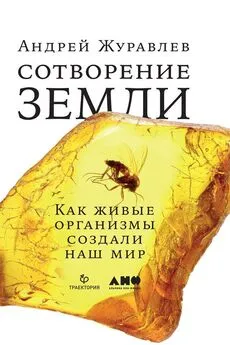

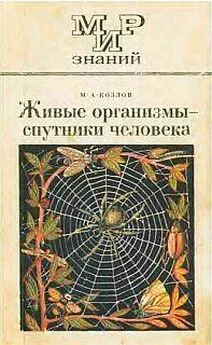
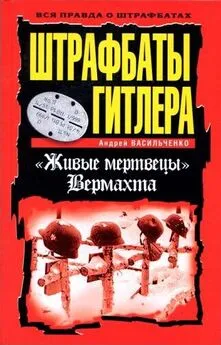
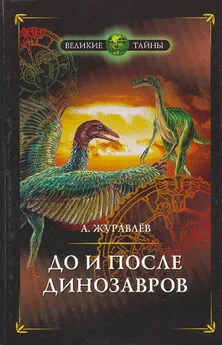
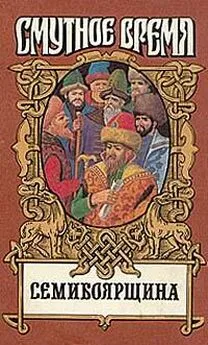

![Андрей Максимов - Самоубийство Земли [Повести и рассказы]](/books/1059571/andrej-maksimov-samoubijstvo-zemli-povesti-i-rass.webp)
